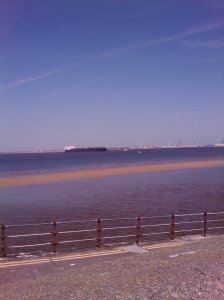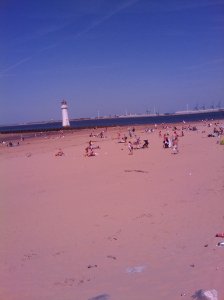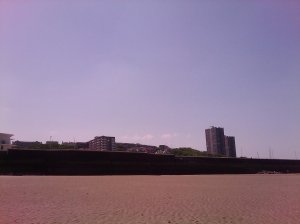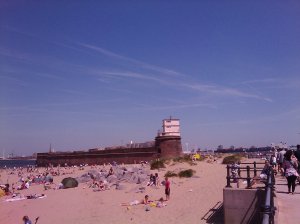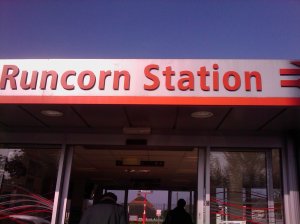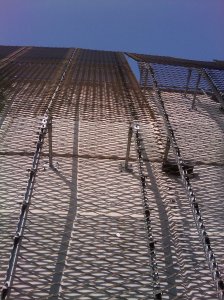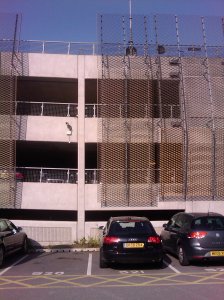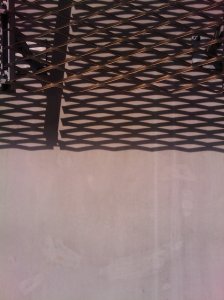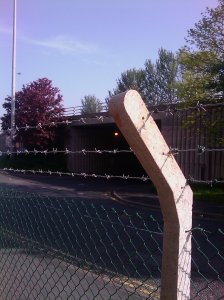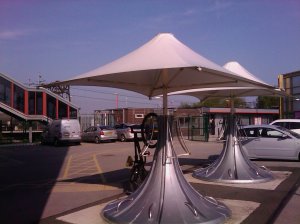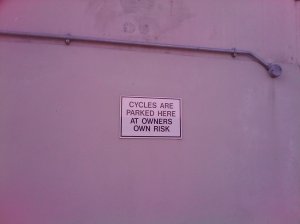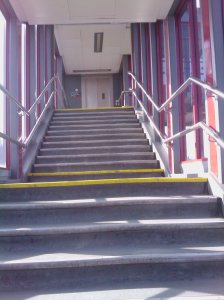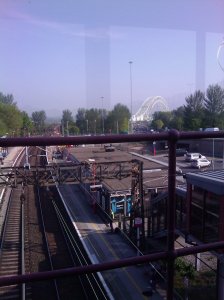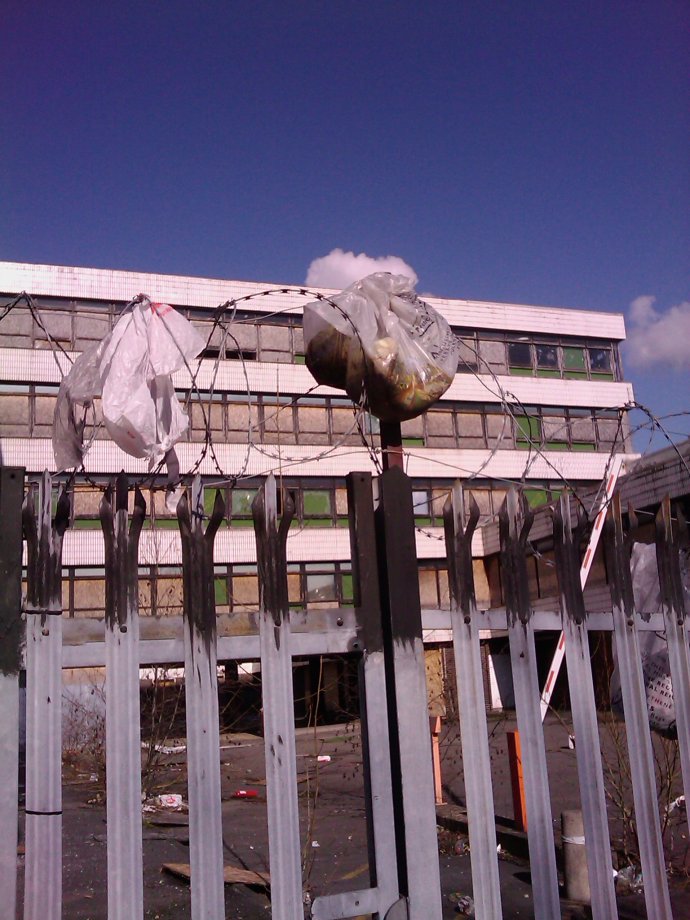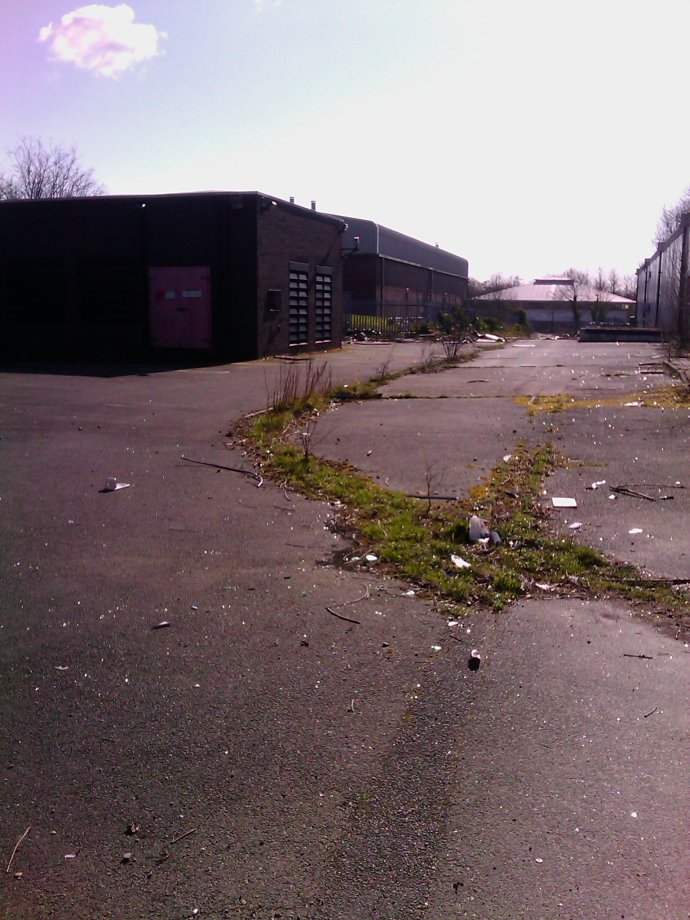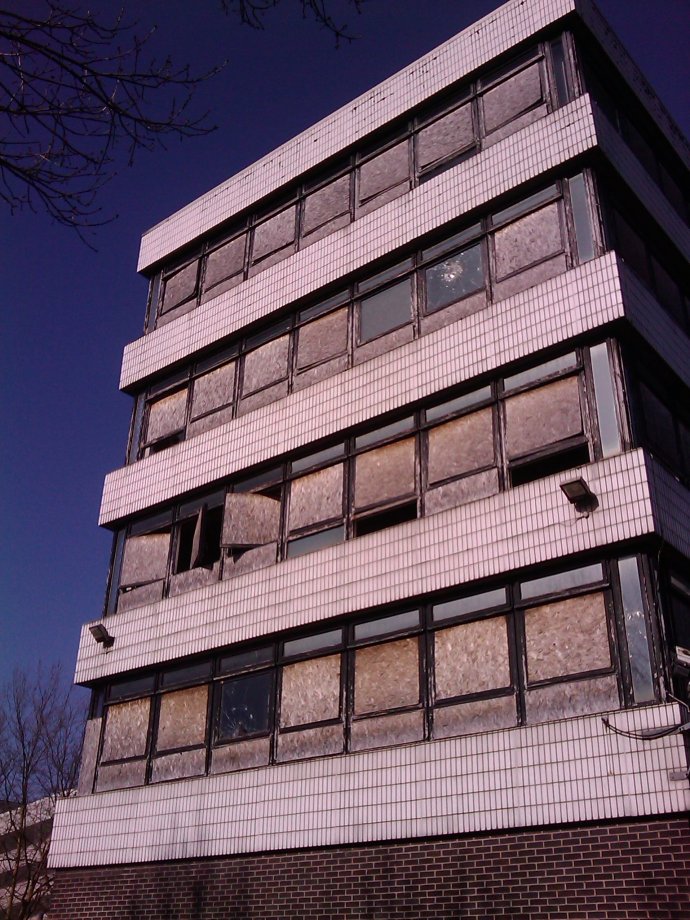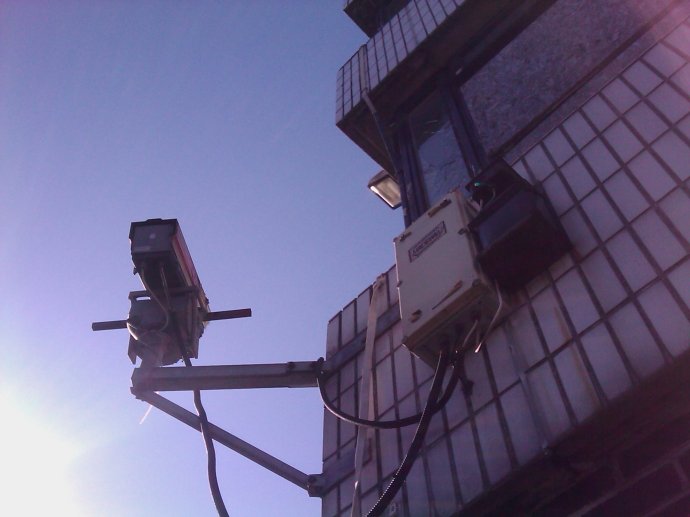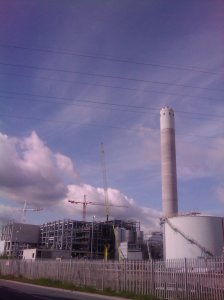 My home town, Runcorn has always been an ICI town. The vast chlorine plants at Rocksavage and Castner Kellner provided jobs for thousands of local people and ancillary jobs on the docks and the tugs and freight yards supplying these vast complexes with raw materials and transporting the by-products to other industries. ICI sold off its chlorine production arm to Ineos Chlor who, like ICI before them, have held the town to economic ransome every time they don’t get their own way. Despite numerous and persistant breaches of pollution laws, the Environment Agency have always given the corporate giant the lighest of slaps on the wrist. Despite poisoning the town for over a century and helping to make the area one of the most polluted in western Europe with the highest cancer rate in the country, the town’s councillors, MPs and bureaucrats have always caved in when ICI or Ineos threatened to withdraw from the town if their profits were threatened by ‘do gooders’ and ‘tree huggers.’
My home town, Runcorn has always been an ICI town. The vast chlorine plants at Rocksavage and Castner Kellner provided jobs for thousands of local people and ancillary jobs on the docks and the tugs and freight yards supplying these vast complexes with raw materials and transporting the by-products to other industries. ICI sold off its chlorine production arm to Ineos Chlor who, like ICI before them, have held the town to economic ransome every time they don’t get their own way. Despite numerous and persistant breaches of pollution laws, the Environment Agency have always given the corporate giant the lighest of slaps on the wrist. Despite poisoning the town for over a century and helping to make the area one of the most polluted in western Europe with the highest cancer rate in the country, the town’s councillors, MPs and bureaucrats have always caved in when ICI or Ineos threatened to withdraw from the town if their profits were threatened by ‘do gooders’ and ‘tree huggers.’
Ineos Chlor in their wisdom have decided that one area they make even money from is energy from waste and so have sited a huge incinerator in the town despite objections from local people worried not only about the added air pollution but also by the massive increase in traffic in one of the most gridlocked parts of the country.
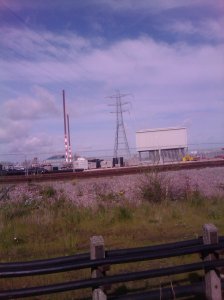
Once the decision had been given the green light by the town’s cowardly council and the corporate whores at the Environment Agency, Ineos Chlor then began constructing a site that had a capacity for 480,000 tonnes of waste rather then the 85,000 tonnes in their planning proposal.
Once again, they attempted to blackmail the council, threatening to pull out of the town altogether if they didn’t get their own way. Once again, the council tried to appease the company despite a campaign from the pressure group Halton Action Group Against The Incinerator (HAGATI) but had to back down amid angry scenes of the Town Hall. Rail and water links already exist to the vast site and now Ineos have agreed to use other means of transport as well as road. Even so, between 85,000 and 480,000 tonnes of the north west’s shite will be burning in that massive chimney soon.

Not surprisingly both the company and the Environment Agency refute any risk to the local population. In their Q&A section of their website Ineos answer the following ‘questions’ as below :
What is ‘Energy from Waste’?
Energy from Waste is a tried and tested technology that allows the recovery of energy from household waste (refuse) normally sent to landfill. Our plant would be supplied with fuel generated from refuse that has been pre-treated where it is collected so that it can be burnt safely to produce energy. This pre-treatment removes recyclable materials such as glass, plastic bottles, paper, wood, ceramics, cans and metals as well as removing moisture and other organic materials such as garden waste and food scraps. After processing, almost three quarters of the waste will have been recycled/removed, leaving around one quarter that will form the fuel used to generate steam and electricity for use by INEOS at Runcorn Site.
Why do we need ‘Energy from Waste’ plants?
Developing Energy from Waste in the UK is very important to be able to effectively manage the waste we produce. Under the EU Landfill Directive, which became law in the UK in 2003, all local authorities across the UK have been set tough targets by central government to reduce the amount of waste that they send to landfill. Energy from Waste technology has strong environmental credentials in that waste can be diverted from landfill to create energy that would otherwise be generated from fossil fuels. There are over 400 such plants operating across Europe, where this technology is more common. In Switzerland, for example, almost 50% of household waste is reused to create energy, rather than be put into landfill. This is compared to Britain, where less than 10% of waste is currently used in this way.
Is ‘Energy from Waste’ safe?
Yes. Energy from Waste is a tried and tested technology that is already being used extensively in Europe in countries such as Denmark, The Netherlands, France, Sweden and Switzerland. By law the plant must comply with the Waste Incineration Directive (WID). This Directive, which applies across the whole of the European Union, details how the plant must be designed and operated and sets maximum emission levels that do not represent a risk to health. In the UK, compliance with the Directive is enforced by the Environment Agency.
Why build the facility at Weston Point, Runcorn?
Runcorn Site uses the same amount of electricity as a city the size of Liverpool, so it is very important to the long-term future of our business to be able to look at alternative ways of producing energy that reduces our dependence on fossil fuels.
It is important that the proposed plant is located as close as possible to Runcorn Site. This is because it is not efficient to transport steam as it starts to condense back to water if pipes are too long. It is also very important that any potential site has good links to the local transport network including rail, road and water. The chosen site at Weston Point meets these needs, and has the added advantage that it is already occupied by industry.
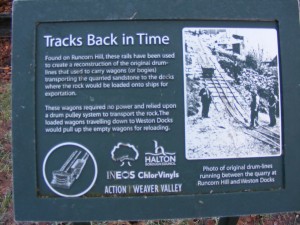
So there you have it; this is an environmentally ‘good’ thing – saving on fossil fuels and landfill waste sites to meet government targets and is it best located in Runcorn because it’s already a pollured hell hole and we couldn’t get away with it anywhere else. Ineos are doing this to help the world, just as they invest in local heritage projects to preserve the natural landscape built upon previous waste dumps like Runcorn Hill (see above). No wonder the Enviroment Agency support the plans. This is from their website:
We have now granted an environmental permit to Ineos Chlor to operate an energy from waste facility at Weston Point, Runcorn.
This decision is the outcome of our careful consideration and thorough determination of the application since we accepted it in October 2009. We recently held a consultation on our draft decision to issue a permit to Ineos Chlor. We would like to thank everyone for their comments, a result of which led to slight changes within the permit documents. However, these changes are not significant enough to change the outcome we proposed in the draft documents.
We have used the most up-to-date scientific evidence and received specialist advice on health matters during this process. As a result we are satisfied that the proposed facility poses no significant risk to the health of local residents or to the environment, and have granted the environmental permit.
Environment Agency officers will enforce strict emission levels and operating standards throughout its operating lifetime.

That word ‘significant’ is pretty significant eh? No ‘significant risk to the health of local residents’ implies there is IS a risk and who decides what is and isn’t ‘significant.’ Oh, but the EA will be ‘enforcing strict emission levels’ but then again, this is the bunch who allowed ICI to get away with flouting pollution regulations for decades. This is from the Friends Of The Earth website detailing how ICI Runcorn became the worst polluters in Britain.
A shocking new report exposes the extent of pollution at ICI Runcorn – possibly Britain’s filthiest factory. It also shows that the Environment Agency (EA) has failed to control the factory properly – it has insufficient staff and has failed to force ICI to improve its plant. Even when it secures a conviction against the company, penalties are too light to act as a deterrent. Friends of the Earth is demanding that the EA acts against company directors as individuals in cases of gross pollution.
The report is published on the second birthday of the EA, which FOE describes as “utterly failing in its duty to control pollution from this disgustingly filthy factory”. The report was written by former pollution control officers of the National Rivers Authority (now part of the EA) [1]. One of the authors spent four years regulating the Runcorn site.
The report shows that:
- there were regular major illegal releases of pollutants from the site. The study looked at three of the thirteen processes at Runcorn between February 1996 and August 1997 [2] There were 244 unauthorised pollution incidents, of which 58 were serious and 8 very serious
- chemicals released included mercury (a nervous system toxin), chloroform (a carcinogen and anaesthetic), trichloroethane (suspect carcinogen, narcotic, irritant),hexachlorobenzene (carcinogen), trichlorobenzene (reproductive toxin)
- the local Weston Canal has been used as “ICI’s drain”. Large amounts of pollutants are routinely discharged into it, together with large accidental releases. The canal is stratified into two layers. The lower layer consists of brine contaminated with mercury. A footpath runs over the Canal, with public access. The EA does not sample the Weston Canal, but does sample at a weir after the canal joins the River Weaver. In spite of dilution by the river, spills of solvents from the ICI site have resulted in chemical pollution levels twenty to sixty times the EU’s Environmental Quality Standard
- groundwater under the site includes chloroform at fifteen times the accepted maximum, and trichloroethane at almost two and half times the accepted maximum
- the EA has too few staff on site to monitor and enforce standards properly. There have never been targets set for ICI to upgrade its plant to standard levels of pollution control. The chlor alkali plant, for example, uses outdated mercury technology,which is not “Best Available Technology Not Exceeding Excessive Cost”, supposedly the standard enforced by the EA. ICI Runcorn therefore has an unfair advantage over better regulated competitors
- ICI has not put in place even the most basic pollution control measures, such as waterproof walls around the vessels containing chemicals
- the heaviest fine levied against ICI has been £300,000 for a leak of more than 150 tonnes of chloroform. The company is currently being prosecuted for a spill of 57 tonnes of trichloroethane. ICI made a net profit of £259 million in 1997, on a turnover of £11 billion.
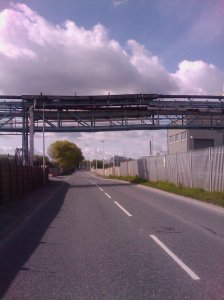
Those of us who have lived under the shadow of ICI/Ineos Chlor and other chemical plants and refineries all our lives have to trust that these corporations and regulators have people not profits as their priority yet how many of these people live in towns and cities as polluted as those cradling the Mersey estuary?
My daughter has recently moved into her first house directly under the new incinerator chimney. It’s easy to say ‘why not just move?’ but all my family live here and my children’s friends all live here so why should we move? Ineos Chlor don’t own the town despite their bribes and blackmailing antics. it’s not as if they employ that many people any more.
In the heyday of the 60s and 70s, almost all the local men were employed at Castners or Rocksavage, then with the development of the new town came Bass, Guinness, YKK, Schreiber and other large employers. Also with better transport links and car ownership, the likes of Vauxhall and Stanlow at Ellesmere Port, BICC in Helsby and Fords at Halewood became easier to reach.

The days of the ICI job for life brigade with their annual share dividends, lucrative shift allowances, generous pension schemes and nepotistic family guilds are long over. As long as chlorine production provided employment for the locals, rates for the council and prestige and profits for the company, then who cared if the water and the soil and the air became poisonous?
Recently the council has unveiled a huge mural entitled ‘Of Heroes & Industry’ celebrating local historical figures such as Queen Ethelfreda, Victoria Cross winning soldier, Todger Jones and ofcourse, the Johnson and Hazlehurst families owners of the Runcorn’s soap making factories in the 19th and early 20th centruries. These ‘heroes’ of industry were perhaps the first major polluters in the town and their poison continues to contaminate the local soil centuries later.

It’s fitting therefore that the meetings to decide the future of the incinerator should be held in the grand house built for Thomas Johnson in 1854 and now serves as the Town Hall. After making a vast fortune, the Johnsons lost most of it attempting to break a blockade during the American Civil War and the house passed onto Charles Hazlehurst in 1871 before passing on to local tannery factory owner and major polluter, Francis Boston in 1903. That terrible mixture of industry and politics keeps on poisoning us all.
As The Prodigy put it; ‘I got the poison’ but who’s got the remedy?



